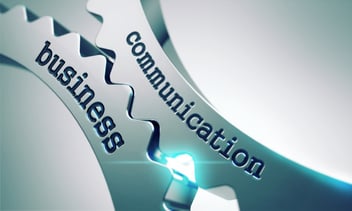(IN PROGRESS)
What a Communication Coach Does
A modern day coach has many roles to fulfill. Being a communication coach is one of the many hats coaches are required to wear. Communication is one aspect to work on with your coach. Many clients work on improving their communication in addition to the many other personal and professional skills with their coach.
Typical client: Often communication coaches work with a new manager or a CEO who doesn’t feel confident as a leader or an ambitious professional who is always looking to improve. The most common coachee is a new manager. The reason is it’s a very relational position i.e. requires a lot of communication.
A newly appointed manager is often someone who was the best at their job compared to their coworkers. The new manager thinks, ‘This will be easy because I’m so good at this thing.’ Maybe they were a loan officer and now they’re a branch manager, and their job is to manage other people. And what they learn is that what they were once good at no longer serves them in their new managerial role. One of the things they often find out is how important communication is in managing people. So that’s the point in which they might seek out a communication coach.”
Communication is such a funny thing because when we think of communication we automatically think of words. What we say is what we communicate. But that’s not all of it. Communication is everything from our words to our actions to how we present ourselves, our body language, the way we react to something in the moment… Communication can be not showing up to someone’s birthday party. That sends a message, and that means something to the other person. Communication is really broad; it’s our actions and the way we live life, not just our words.
When you work with someone on communication, it’s really important for them to see that communication isn’t just words and to help them identify all the ways in which they communicate. Say a manager comes to work with me on communication. I’ll ask them to list all the ways in which they communicate to their staff or their spouse or their kids. Generally, they’ll start with what they say to them. As a coach, we push you to identify other ways you’re communicating.
We help create a list of all the ways you’re communicating with your employees. With this list they start to see the different ways their actions affect the people around them. They might be like, ‘Oh, I guess what time I get to the office and when I leave is a way I communicate with my employees. How I take my lunch break, whether or not I show up on time to meetings, how prepared I am in those meetings is all how I communicate with my employees.’
And what you see, particularly with people who care about culture, is that their nonverbal cues are so much more impactful than their words.
WHY CLIENTS WORK WITH COACHES
People start working with coaches because they want a certain outcome and they usually come into coaching not realizing that communication will be a contributor to that outcome. Rarely do we think we have a communication problem. Usually the goal is to be a better manager or a better employee. Rarely do people attribute the problem to communication. And even then, the communication piece is usually tied to something else, i.e. to help become a better leader.
Client may have just gotten a horrible review because they suck at communicating, or they may have just become a manager and are realizing that communication is a big part of it in order to become successful.
CULTURE
I.e. the environment in the office
- Taking breaks
- Food available
- Activities (i.e. ping pong table in break room, running at lunch)
However, boss’s actions might not reflect that culture. If boss is at work from 6 am to 10 pm, taking lunch at desk and never interacting with others/never playing ping pong or taking walks or whatever, then those actions speak loudly about how that boss actually feels about things they claim to be part of the culture, i.e. they’re not worth your time.
For a leader, usually the starting point is in those nonverbal communication points.
You have to be the culture. You can’t just communicate what you’re okay with the culture being. How I dress is going to tell my staff the dress code way more than the manual.
HOW COACHES HELP WITH COMMUNICATION
A coach helps people become aware of how we actually communicate.
Our lives are so busy and we all get so caught up in them that we rarely come out and are proactive about our lives. So when you work with a coach and you’re working on that communication, you’re taking a step toward proactively working on your life and specifically your communication in a way that you probably wouldn’t make time for otherwise.
Nobody is stepping away from their busy inboxes or tight schedules to spend an hour meditating on how they can communicate better. Coaches help raise self-awareness on this kind of thing.
The key is taking the time for that self awareness and that moves you in a positive direction.
Coaches also help narrow your focus. We can’t be mindful about every single thing in our lives; otherwise, we’d never get anything done. Therefore, a coach helps clients understand which aspects of communication are worth spending more time on to get “more bang for your buck.”
Exercise: increasing self-awareness. Creating a list of all the ways you’re communicating with your staff beyond verbal and then ranking them in importance and then identifying which one you want to work on. Developing a vision of what it would mean to become a better communicator and working toward that.
LISTENING
First step is actually listening and being present while someone is speaking, which is actually hard. “Usually the best way to listen is to look for ways to ask follow-up questions instead of looking for ways to contribute to the conversation. ‘Becoming interested’ is how I think of it.”
We all have our own interests and agendas and ways we want to go about things, which can make listening hard.
Listening for potential: A person is standing looking at another person, and instead of looking at their face and their words, they’re looking at the whole person. So when you’re listening for potential, you’re looking for not just the words, but the emotions attached to them, their body signals, their triggers.
You have to go into a conversation understanding the goals. Like when you’re doing a one-on-one with an employee, your job is to be there and listen to what they have to say. It’s not time for you to take them down a rabbit hole of your choosing.
Listening with no agenda: If you’re a manager, you’re always looking for a way to make your employees better, or what they’re doing wrong, or what their shirt looks like, or what you could do. But when I think of listening with no agenda, I think of when you’re at home on your mom’s couch and you’re just talking. You’re not trying to figure out how to make someone a better mom or a better whatever-- you’re just listening to listen because you care about that person.
People want to be heard. They don't want to be fixed. And the way to improve is by letting them work out their own stuff. And that’s what I do as a coach. I never tell people what to do. I just facilitate their own thought process. That goes hand in hand with listening. People don’t want to be fixed; they want to be witnessed. And when you can witness them, then they can develop all on their own.
IS IT EVER TOO LATE TO SEEK COACHING?
Communication is all about simple improvement. Every day, we make a choice about how we are going to communicate, and every day is the perfect day to start day one of being a better communicator.




